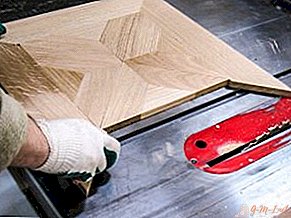 Parquet, as a classic floor covering, has a number of indisputable advantages of a technical, operational and decorative nature. This is a material with, on the one hand, good wear resistance and the ability to perform its functions over a long period of time. On the other hand, this product does not lose its attractiveness and is currently preferred for design reasons. The use of this type of product promises safety for human health. Good manufacturability allows you to make flooring yourself.
Parquet, as a classic floor covering, has a number of indisputable advantages of a technical, operational and decorative nature. This is a material with, on the one hand, good wear resistance and the ability to perform its functions over a long period of time. On the other hand, this product does not lose its attractiveness and is currently preferred for design reasons. The use of this type of product promises safety for human health. Good manufacturability allows you to make flooring yourself.
How to make parquet with your own hands: manufacturing
Production of high-quality parquet requires thorough preparation. This applies to both the selection and purchase of blanks, as well as tools and equipment used in the process.
We select material
Parquet is preferably made from hard wood. From the local, it is better to choose oak, ash, beech, maple, hornbeam. In no case should you opt for birch, linden and other similar materials. Limitations are associated with their softness, and, accordingly, rapid wear during operation.
As for the degree of drying of the starting material, there are two options: natural drying, reaching 8-9% moisture, is suitable for technological parameters. Naturally, it is better to choose a machine-drying product, but they are not always available, and they are much more expensive.
 Regarding the shape of the wood, it is preferable to choose planks with a minimum margin for grinding. If the parquet is provided in sizes 500x75x20 mm, then the planks may be 4-5 mm thicker, 40-50 mm longer and slightly wider. A stock in length is necessary in order to be able to produce high-quality trimming, in thickness so that it is possible to bring out the plane and sand the product well.
Regarding the shape of the wood, it is preferable to choose planks with a minimum margin for grinding. If the parquet is provided in sizes 500x75x20 mm, then the planks may be 4-5 mm thicker, 40-50 mm longer and slightly wider. A stock in length is necessary in order to be able to produce high-quality trimming, in thickness so that it is possible to bring out the plane and sand the product well.
As for the basic tools, it is preferable to carry out all work using a stationary circular saw or a table fixed to the table, a miter saw, several types of grinders, and also, if possible, a milling cutter for connecting grooves.
The problem is that if there is no milling cutter and skills to use, you will have to produce parquet without locks, with straight edges, just aligned during processing. But the cost of the milling cutter is not so big, you can learn to work with it pretty quickly. This is a tool that can be useful in the future for the production of other products, from the plinth to furniture. Naturally, consumables are needed, including additional saw blades and cutters, if used by the milling cutter.
Manufacturing process
 First of all, it is necessary to properly prepare the source material. You can purchase wood that has already gone through the planing process, that is, alignment on a plane. If not, you have to process the surface yourself using a manual electric jointer or ordinary planers. The result will not be so impressive, but then everything can be fixed with the help of orbital and vibration grinders.
First of all, it is necessary to properly prepare the source material. You can purchase wood that has already gone through the planing process, that is, alignment on a plane. If not, you have to process the surface yourself using a manual electric jointer or ordinary planers. The result will not be so impressive, but then everything can be fixed with the help of orbital and vibration grinders.- The next task will be to prepare equipment for the manufacture of a large number of exactly the same products. To do this, limiters must be installed on the circular and cross-cut saws, which will allow you to work quickly and efficiently. It remains only to substitute materials and use the tool in accelerated mode.
- After everything is ready, you need to start grinding. The process is done manually because special equipment is very expensive. Usually it’s enough to use several types of grinders to get a good result. Accurate grinding with constant resizing with a caliper and acquired skills will help to produce excellent products that can be effectively used to create high-quality and durable beautiful floors.


 First of all, it is necessary to properly prepare the source material. You can purchase wood that has already gone through the planing process, that is, alignment on a plane. If not, you have to process the surface yourself using a manual electric jointer or ordinary planers. The result will not be so impressive, but then everything can be fixed with the help of orbital and vibration grinders.
First of all, it is necessary to properly prepare the source material. You can purchase wood that has already gone through the planing process, that is, alignment on a plane. If not, you have to process the surface yourself using a manual electric jointer or ordinary planers. The result will not be so impressive, but then everything can be fixed with the help of orbital and vibration grinders.
Leave Your Comment